Idea by
Kyra Papanikolaou
Call for ideas 2020
Embedding sustainable water management in urban blocks
Embedding sustainable water management in urban blocks
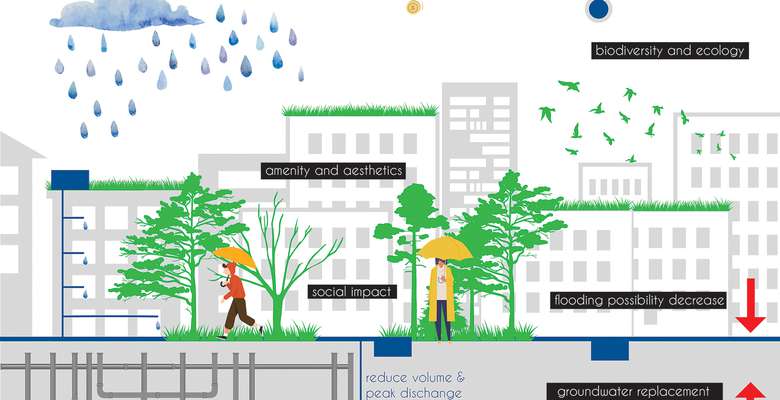
- Systemic changes
In contemporary cities the natural cycle of water has been replaced by the urban water cycle, characterised by rapid collection and drainage of rainwater, as well as minimal infiltration and evaporation which has contributed to the deterioration οf the urban micro climate. At the same time, integrating water management into the design and planning process has not yet been accomplished, as it remains a complex issue for architects. My project is about developing an “architect friendly” urban water management model that will allow the visualisation of water management scenarios in urban blocks, as well as the quantitative comparison of their impact to the micro climate. The project addresses the climatic problems that have risen in contemporary cities due to conventional water management and aims to mitigate them and improve the micro climate in cities by facilitating the integration of water sensitive urban design principles in future architecture.
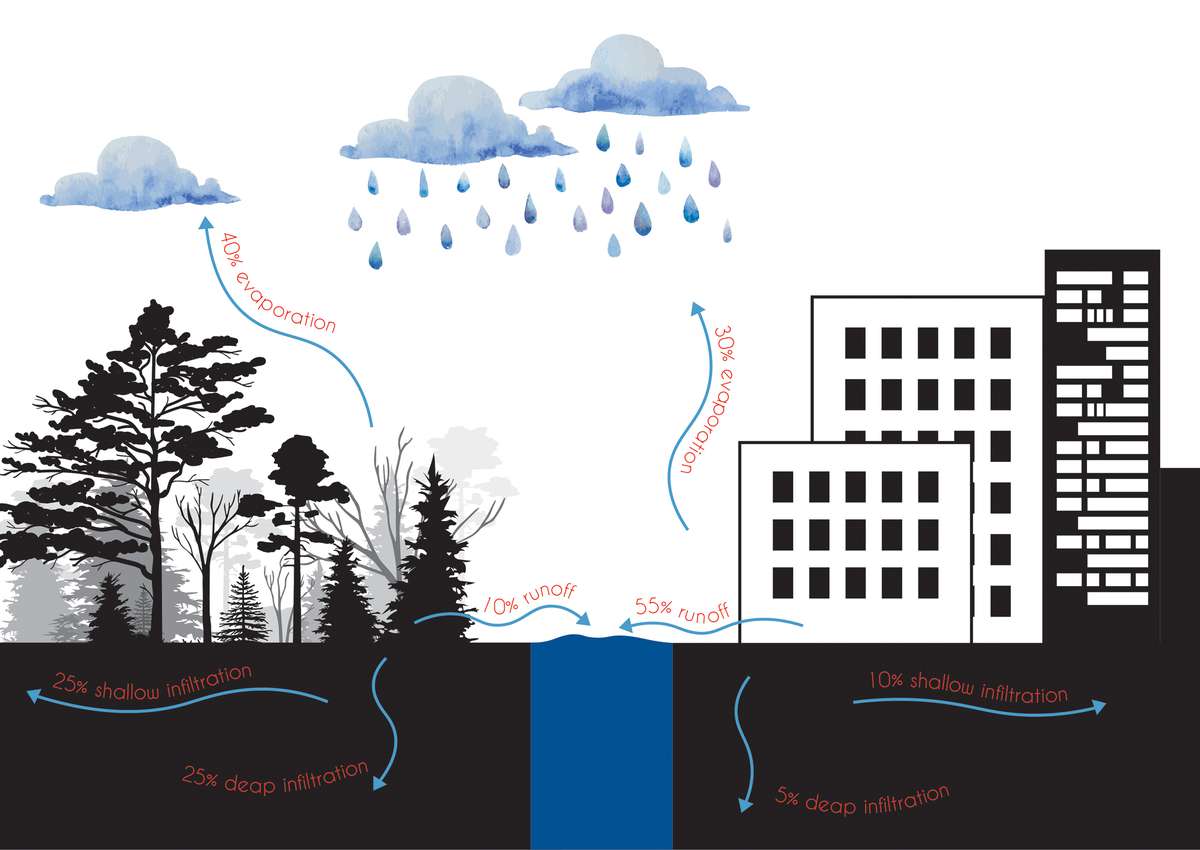
In contemporary cities the natural cycle of water has been replaced by the urban water cycle, characterised by rapid collection and drainage of rainwater, as well as minimal infiltration and evaporation, which, combined with the negative effects of climate change, has contributed to the deterioration οf the urban environment microclimate and living conditions.
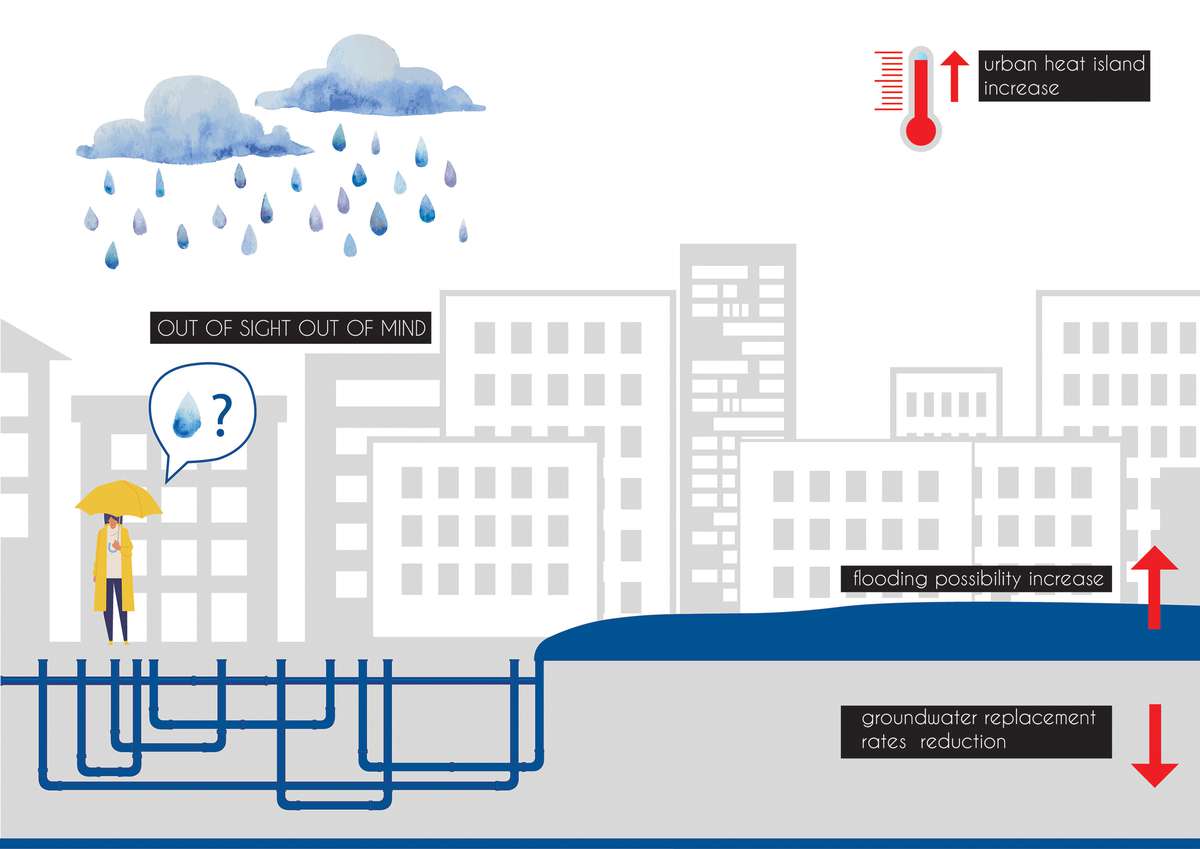
Nowadays, water infiltration into the ground, as well as groundwater replacement rates are reduced. The local climate is negatively affected as, due to the reduction of infiltration and evaporation, a drier and warmer climate is created in the city centre than in suburban areas. The possibility of flooding is increased. Moreover, the public is unable to appreciate the role and importance of storm water.
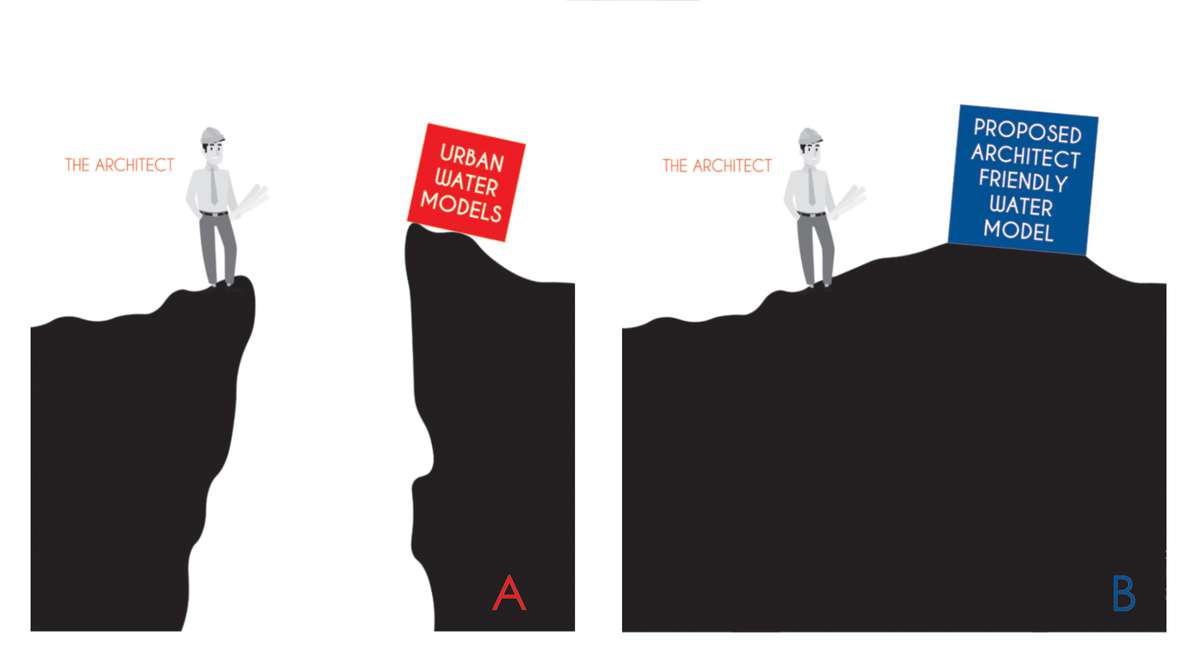
A. Despite the increase in urban water simulation models, there is still a gap in the literature regarding models integrating storm water management measures with urban planning processes, thus hindering their application in practice.
B. The model proposed in this project takes into consideration the implementation gap that existing urban water management models present.
Embedding sustainable water management in urban blocks
Embedding sustainable water management in urban blocks

- Systemic changes
In contemporary cities the natural cycle of water has been replaced by the urban water cycle, characterised by rapid collection and drainage of rainwater, as well as minimal infiltration and evaporation which has contributed to the deterioration οf the urban micro climate. At the same time, integrating water management into the design and planning process has not yet been accomplished, as it remains a complex issue for architects. My project is about developing an “architect friendly” urban water management model that will allow the visualisation of water management scenarios in urban blocks, as well as the quantitative comparison of their impact to the micro climate. The project addresses the climatic problems that have risen in contemporary cities due to conventional water management and aims to mitigate them and improve the micro climate in cities by facilitating the integration of water sensitive urban design principles in future architecture.

In contemporary cities the natural cycle of water has been replaced by the urban water cycle, characterised by rapid collection and drainage of rainwater, as well as minimal infiltration and evaporation, which, combined with the negative effects of climate change, has contributed to the deterioration οf the urban environment microclimate and living conditions.
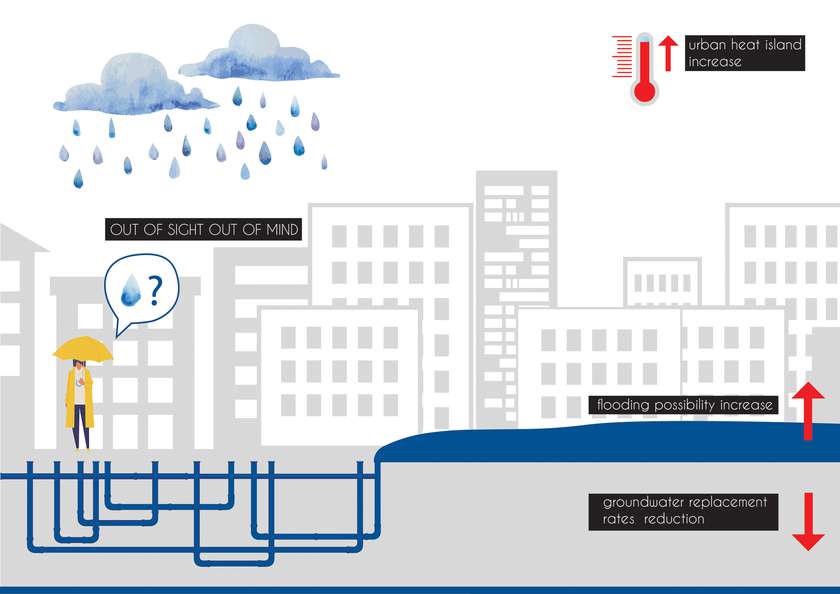
Nowadays, water infiltration into the ground, as well as groundwater replacement rates are reduced. The local climate is negatively affected as, due to the reduction of infiltration and evaporation, a drier and warmer climate is created in the city centre than in suburban areas. The possibility of flooding is increased. Moreover, the public is unable to appreciate the role and importance of storm water.
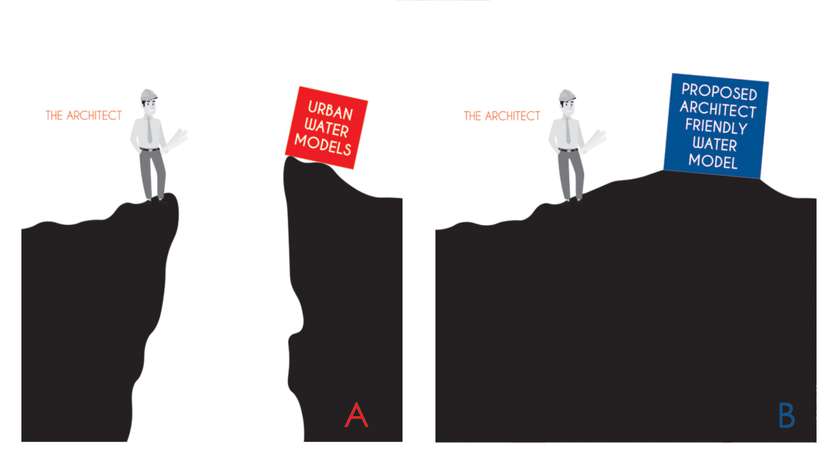
A. Despite the increase in urban water simulation models, there is still a gap in the literature regarding models integrating storm water management measures with urban planning processes, thus hindering their application in practice.
B. The model proposed in this project takes into consideration the implementation gap that existing urban water management models present.